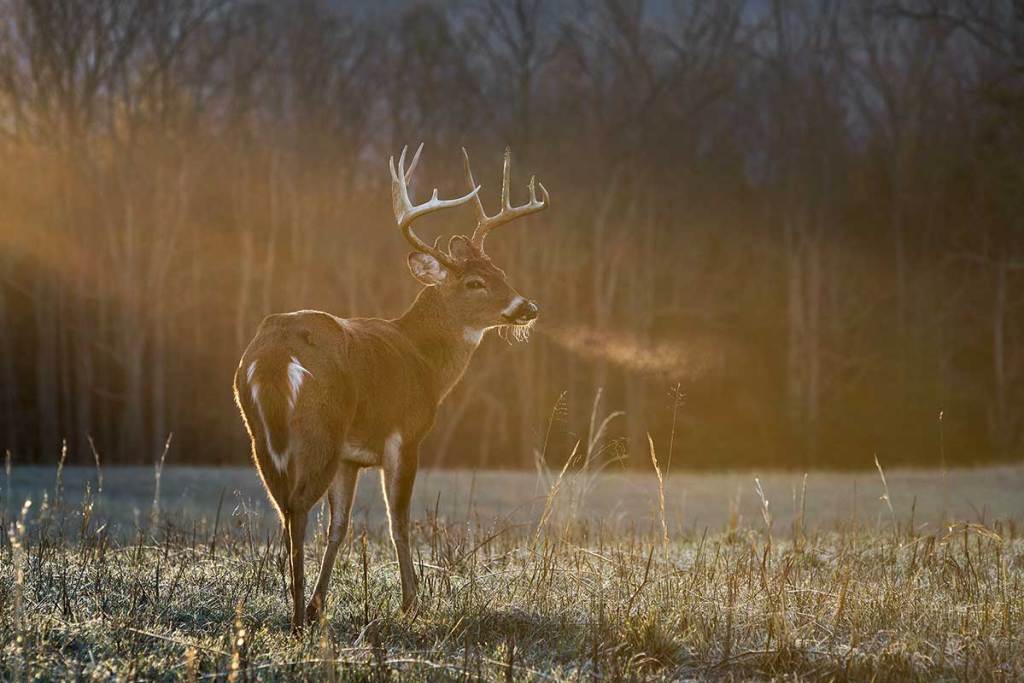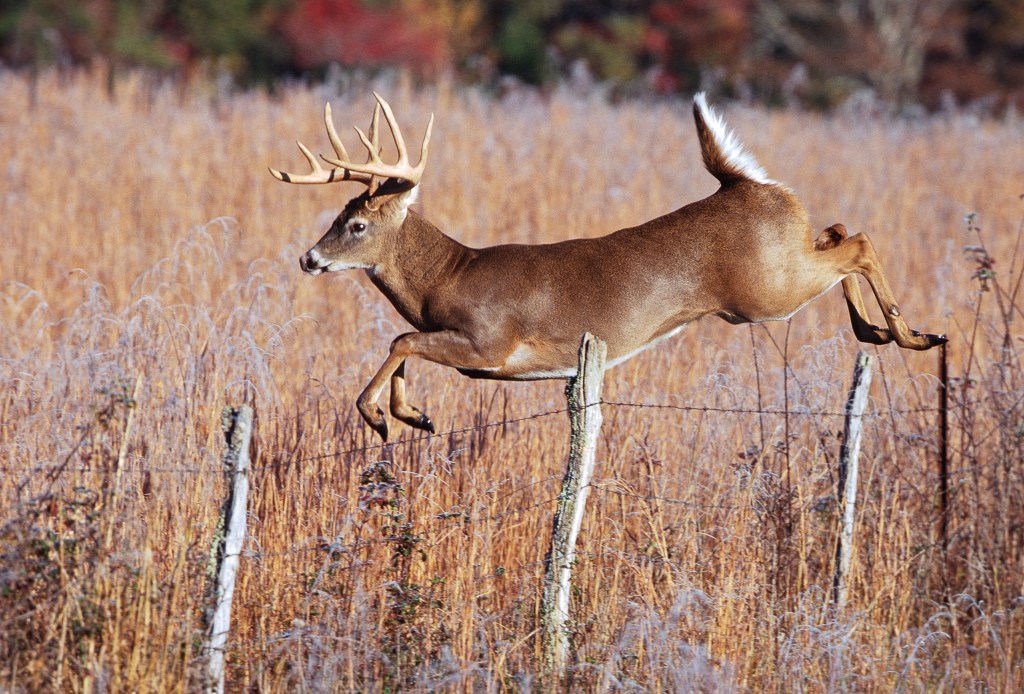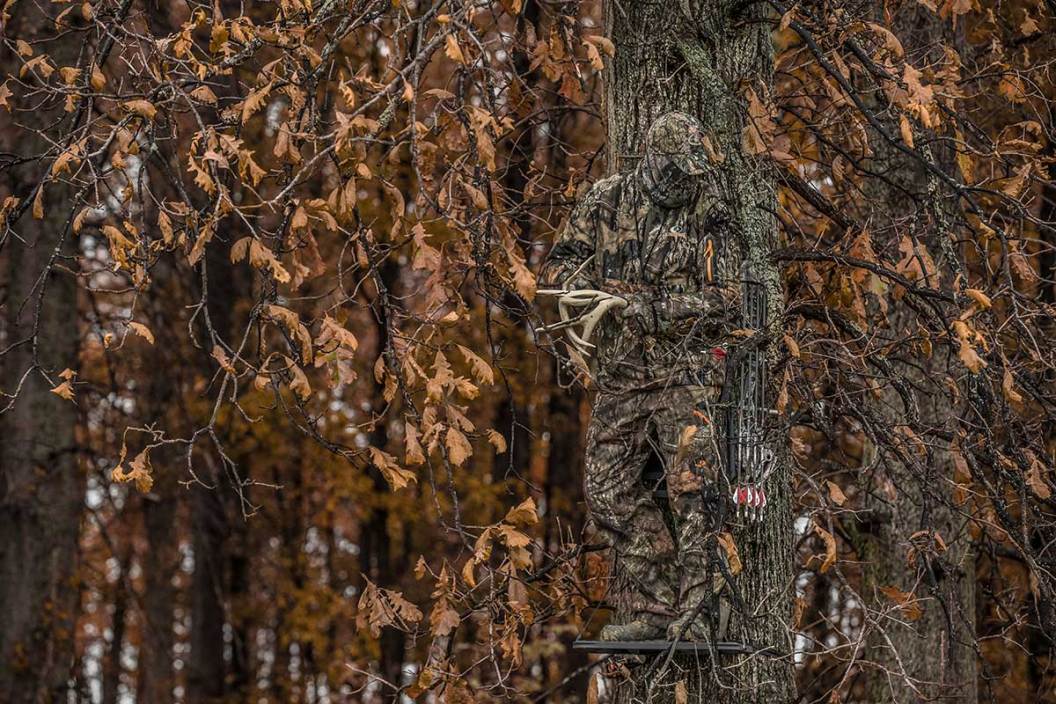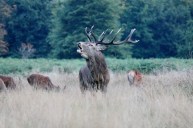Calling whitetails is something that has always fascinated me. It brings us as hunters closer to nature, where we feel more connected as we communicate with the deer to lure them in. However, you won't always find this consistent with all hunters. Some hunters qualify calling as gimmicky and ineffective, while newer hunters are wary of calling in fear that they might spook deer with overcalling or improper techniques. I fall in the middle, and feel like there's always a time and place for calling whitetails, but you've got to be smart about it.
Three of my last four successfully hunted whitetails came within bow range due to me calling them in with a combo of antler rattling, grunting, and doe bleats. When I pull it off correctly, I have witnessed how effective calling can be on mature bucks. Since we can all benefit from learning more, here are a few tips to help you lure in that trophy buck this year through calling.
How to Call in Whitetails Properly

aheflin/Getty
Watch for Pre-Rut
As Halloween gets closer and November is just around the corner, bucks are starting to ditch their bachelor groups and focus on territorial dominance. This is one of the best times to start grunting and light rattling, although I would wait a couple of weeks before you begin calling blindly. Instead, if you're hunting a big ag field or food plot and a buck is circling downwind as he checks the primary scrapes, this is an excellent opportunity to throw out a few contact grunts to get his attention and entice him to come in, looking for an intruder buck to chase off or fight.
If a buck is stubborn and doesn't seem to want to come into a grunt, some light rattling can push him over the edge and have him charging in your direction. I killed several bucks during the last week of October by rattling them from more than 100 yards. This is that sweet spot of the year when you know the bucks aren't locked down yet, and they'll be looking to claim their territory as they prepare for the rut.
Prioritize Bedding Over Food
As the rut rolls around, I transition entirely from food sources to travel corridors near bedding areas. Bucks are spending less and less time in the food plots, and they're focusing on when that first doe will go into heat.
If you can find an active rub line or a heavily-used trail in a transition area between bedding and food, this is a great place to set up and start throwing out grunt calls and banging the antlers together. Odds are, there will be a cruising buck within earshot, and he'll be coming in to investigate.
Be Realistic

HildeAnna via Getty Images
I'll start setting up in these transition areas a few days into November, and that's when I will employ some blind calling. I call every 30 to 45 minutes and present a realistic situation. This could look like a tending grunt and a doe bleat, or maybe a snort wheeze and then a few seconds later some rattling antlers. The key is to imitate a dominant buck's natural sounds and presence, which will drive your hit-lister crazy and get him to come in and see what's going on.
I have seen so many hunters bang their rattling antlers together for two minutes or more, but that isn't natural and will more than likely scare off any deer in the area. I used to watch online videos of deer communication sequences to see how bucks react to each other during the rut. That, paired with the experience of seeing it firsthand, has allowed me to create a natural presentation that could fool even the most mature buck. And you can do this too, with some experience and practice.
Be Aware of Your Surroundings
There's nothing worse than starting to rattle or getting midway through a tending grunt, and you realize there is a doe five yards behind you, just waiting to blow. This has happened to me more times than I would like to admit, and it shouldn't ever happen. Before you call, carefully check your area to ensure there aren't already deer near you that you weren't aware of. Unwanted eyes locked on you is never good, so be mindful of what's around you.
Stay Committed During Post-Rut

KeithSzafranski/Getty Images
As the rut starts to die and you see less chasing, it can be natural to want to put the grunt call and rattling antlers away and move into late-season food sources, but don't be too hasty. The does that have yet to be bread will cycle back through heat, and you can bet that every buck in the area will be looking for them. Sure, their energy won't be quite the same, and you may have to die down on the rattling and grunt calls and focus more on doe bleats, but calling will still be highly effective.
During the post-rut, I like to hunt 40 to 50 yards off of a food plot on an active trail. Bucks will slowly check these plots for any remaining unbred does, and you'll likely give him some urgency by throwing out some doe bleats and a couple higher-pitched grunts. The post-rut gets a bad reputation for being the end of the chaos, but it shouldn't. There is still a lot of great action out there. You might have to work a little more, so just stay committed.
Bringing in a trophy buck through calling is a feeling like no other. When timed right and with the appropriate execution, it can be one of the most effective ways of harvesting a mature whitetail. Use this offseason to brush up on some of your calling skills, and be ready to use these tips when late October rolls around. Understanding how and when to call will improve your success drastically this fall.




